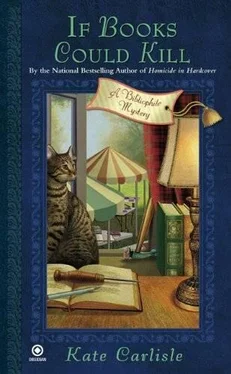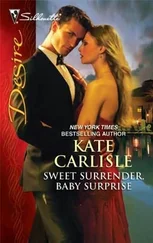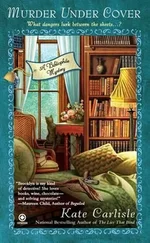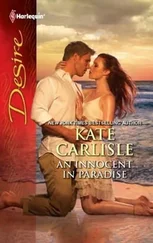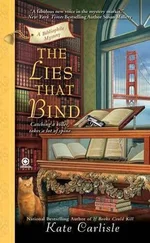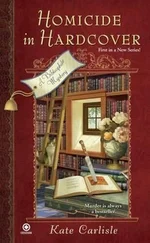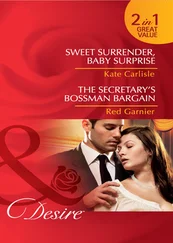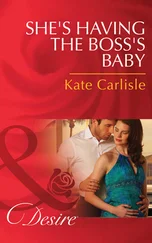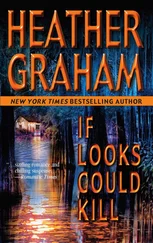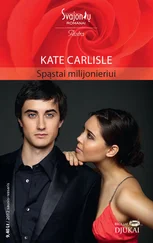The minivan had finally arrived from the parking garage and Robin was already at the wheel. Mom had the front passenger seat, so Helen and I climbed in the back with Dad.
“Helen’s coming with us,” I said, stating the obvious.
“Wonderful,” Mom said.
“Super,” Dad said, sliding over. “Buckle up, everyone.”
“The concierge gave me directions for a scenic route, so let’s hope we don’t get lost.” With that warning, Robin drove south out of the city down a busy two-lane highway. After a few miles, suburbia turned to rural farm-land, with mown fields and low hedges. In one field, six large haystacks were piled in a neat row.
“It looks like a van Gogh painting,” Mom said with a sigh. “I want to get a picture of that on the way home.”
After twenty minutes, Robin turned onto a slightly hilly, residential street and followed it until the road ended in a wide, well-paved parking lot. As she pulled into a space, the car lurched forward and she pumped the brakes a few times.
“Everything okay?” Mom asked.
“I’m just not used to the brakes,” Robin said with a shrug. “British cars take some getting used to.”
I looked around at the smoothly paved surfaces and shiny brick wall surrounding a new visitors’ center. “They’ve upgraded this whole area.”
Robin nodded. “I’ll say. It used to be a dirt lot.”
Hollywood crews had invaded Rosslyn Chapel a few years back to film one of the climactic scenes in The Da Vinci Code. I’d heard that the producers had paid Rosslyn Chapel a potful of money to upgrade the place. It was a good thing, since the book and film had been responsible for bringing thousands of thundering hordes of tourists to the small, fragile chapel, disrupting the neighborhood and challenging the Rosslyn estate to take drastic measures before the church was completely destroyed.
A semipermanent canopy and scaffolding covered the ancient roof and sides, protecting the chapel from the rain that seeped into the walls and softened the stone.
We stopped to buy tickets at the clean, modern visitors’ center, noted the addition of a small but fully stocked café, then walked across the grounds to the chapel.
As we stepped inside the dark church, my first thought was how impossible it would be to describe Rosslyn Chapel in just a few words. Enigmatic, charming and otherworldly were several that came to mind, but they weren’t enough.
Even though I’d visited before, it was still a shock to realize how small it was, only thirty-five feet across and maybe twice that in length. It was also darker than expected, and so incredibly ornate; with carvings on every surface of every wall and ceiling, it was almost overwhelming.
Every inch of carved stonework seemed to hold some esoteric meaning. There were symbols from every biblical lesson, every saint, every sin, every virtue. The vast and complex story of creation was carved into one wall. The history of Scotland was represented, including a small sculpture of Robert the Bruce and his well-known heart. One prominent pillar showed angels playing every musical instrument imaginable. Mythological creatures ran amok. Even Scandinavian dragons dwelled at the base of one pillar, with vines streaming from their mouths.
Signs and symbols of the Knights Templar and the Freemasons who’d built the structure were everywhere. It was said that the only reason Rosslyn Chapel was spared by Cromwell during Britain ’s own civil war was that Cromwell was a Freemason.
Mom walked around, staring up at the ceiling with its thousands of small carved flowers and stars. When she bumped into one of the pillars, I hurried over and put my arm through hers.
“Mom, why don’t we explore together for a while?”
“Oh, that would be fun,” she said, patting my arm. “This place rocks. I’m getting all sorts of supreme vibes, aren’t you?”
“Oh, yeah, I feel the power.” I actually did. You couldn’t help but feel the energy of the place.
I took her into the Lady Chapel that ran along one end of the church and pointed out a green man carved on the end of a protruding arch that jutted from the ceiling near the altar of Saint Andrew.
“What in the world?” She moved in as close as she could get and stared at the strange, ancient pagan fertility symbol whose round face was always shown surrounded by leaves. Green men could be found all over Rosslyn Chapel, carved on the walls, the ceiling, the pillars, and hidden among the seven deadly sins.
One school of thought claimed that the little green man symbolized man’s capacity for great goodness versus his corresponding facility for evil-whatever that meant. Some said the story of Robin Hood had its origins in the green man legend. The eerie thing was, green men had been found carved in the old stone walls of churches and abbeys all over Britain, depicted as demon, trickster, or lord of the forest. His true meaning remained a primordial mystery.
Surrounded by all the symbols of freemasonry in the pillars and the walls, I felt my thoughts begin to run wild. It occurred to me as I stood staring at a carving of an angel playing bagpipes that there might be some deeper significance to the Robert Burns poems than an illicit love affair and a secret baby.
What if the story of Rabbie and the princess was true? What if the royal family had known about the baby being Robert Burns’s child all along? What if they had not only refused to allow the upstart, rabble-rousing Freemason Scotsman to be an acknowledged link in the royal lineage, but also decided to do something about it? Burns had been ill ever since he’d left Edinburgh and died prematurely at the age of thirty-seven.
What if his death had been less than natural? What if he’d been murdered?
“What if you’re hallucinating?” I muttered as I shook my head to clear away the murderous thoughts. “Jeezo, Wainwright, chill out.”
I loved a conspiracy theory as much as the next girl, but that was ridiculous. In my defense, it probably wasn’t the first time someone had suffered acute delirium inside Rosslyn Chapel.
“What’d you say, honey?” Mom asked.
“Nothing.” I smiled gaily, causing her to frown.
“What’s this?” I asked quickly, pointing to the arch above us. It seemed to distract her as she checked her brochure.
“The danse macabre,” she explained. “See the little skeletons walking next to their earthly bodies? They’re supposed to represent death’s supremacy over mankind.”
“Cheery,” I said.
“I know.” She mused, “I wouldn’t be surprised to find out these old Freemason dudes were once Deadheads.”
It was useless to point out that the chapel had been built over six hundred years ago, while the Grateful Dead and their Deadhead followers had come into being only forty or so years ago, not the other way around. Mom had a whole different way of dealing with that pesky space-time continuum thing.
And who was to say she wasn’t right? I thought, staring at the perky little carved skeletons. In my current state, I wouldn’t have been surprised to see them pop out of the wall and start grooving to “Iko Iko.”
And now that I thought about it, that carving of the last prince of Orkney, William St. Clair, over in the corner near the entrance to the baptistry, bore a striking resemblance to Jerry Garcia.
Oh, good. More hallucinating.
We caught up with Dad downstairs in the sacristy, an austere space with none of the ornate carvings found in the main church. Here, six feet below ground level, was where a number of tombs of the Rosslyn barons and Orkney princes were located. If there were any ghosts in Rosslyn Chapel, I figured they slept here at night.
“Who’s ready for lunch?” Dad said, not a moment too soon.
Читать дальше
